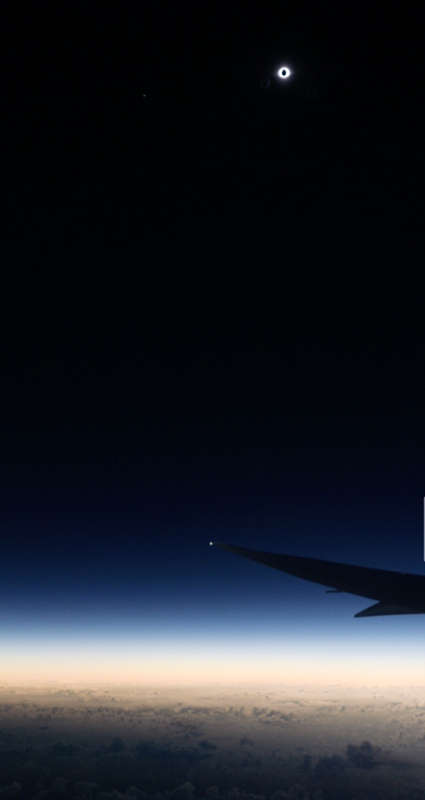Credit & Copyright: Bob Minor
Explanation:
The total phase of the
July 2nd solar eclipse lasted about
4 minutes and 30 seconds at the point of
maximum eclipse.
On the surface of planet Earth, that was about 600 nautical miles
north of Easter Island in the Southern Pacific Ocean.
But from 37,000 feet above, on a charter flight intercepting
the Moon's shadow, the Moon could be seen to completely block the Sun
for about 8 minutes and 30 seconds.
With a tailwind at the mid-eclipse intercept point,
the plane was traveling around 488 nautical miles per hour
chasing along the
Moon's shadow track.
From above the clouds this wide-field image of the
totally eclipsed Sun and
shimmering solar corona over the wing records the spectacular
view from a window seat on the sunward side of the aircraft.
1999 2000 2001 2002 2003 2004 2005 2006 2007 2008 2009 2010 2011 2012 2013 2014 2015 2016 2017 2018 2019 2020 2021 2022 2023 2024 2025 |
Yanvar' Fevral' Mart Aprel' Mai Iyun' Iyul' Avgust Sentyabr' Oktyabr' Noyabr' Dekabr' |
NASA Web Site Statements, Warnings, and Disclaimers
NASA Official: Jay Norris. Specific rights apply.
A service of: LHEA at NASA / GSFC
& Michigan Tech. U.
|
Publikacii s klyuchevymi slovami:
polnoe solnechnoe zatmenie
Publikacii so slovami: polnoe solnechnoe zatmenie | |
Sm. takzhe:
Vse publikacii na tu zhe temu >> | |
